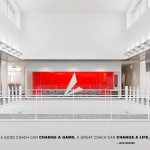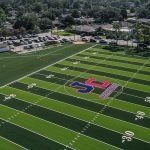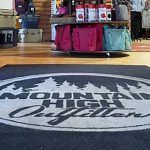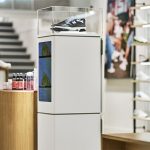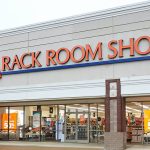Retail sales of athletic footwear rose 4.4% during the six-month period, October 2004 through March 2005, according to newly released data from the National Sporting Goods Association (NSGA). Sales for the six-month reporting period were $5.53 billion versus $5.30 billion for the same period the previous year.
“Unit sales for the period had risen only 2.7%, indicating that price increases held during the six months,” said NSGA Vice President of Information & Research Thomas B. Doyle.
Only two of the 16 types of athletic footwear covered in the survey showed sales declines during the six-month period. Football shoes sales fell 9% in units and 6% in dollars. Soccer shoes sales declined 1% in dollars.
Among footwear categories with projected sales of five million units or more, only basketball shoes showed no increase in dollar sales. Fashion sneakers led the dollar increase, up 10%; they were followed by gym shoes/sneakers, up 6%. Other categories showing increases were jogging/running shoes, up 5%; cross training shoes, up 5%; walking shoes, up 4%; and tennis shoes, up 3%. Basketball shoe sales were flat.
In addition to the 16 athletic footwear categories in the survey, eight other recreation and sport footwear categories were surveyed. For all 24 categories, sales rose 4.3% to $6.52 million versus $6.25 million in the previous six-month period. Unit sales for the 24 categories rose 2.9%.
The Association had projected a 2% increase in athletic footwear sales for 2005. “Reality is running ahead of projections,” Doyle said.
The largest categories – in terms of dollars spent by consumers during this six-month period – were walking shoes ($1.58 billion) and running/jogging shoes ($906 million).
For the six-month reporting period, full-line sporting goods stores accounted for 13.6% of unit sales in athletic and sports footwear, a slight decline from 13.8% last year. Specialty athletic footwear stores and discount stores lost market share. Specialty athletic footwear stores claimed 9.8% of units in the athletic and sports footwear market versus 11.5% the previous year; discount stores, 21.7% versus 22.0% the previous year.
In units, online/internet sales were 4.1% of the total footwear market, up from 3.0% the previous year.
To gather the data, NSGA surveys a total of 40,000 households — 20,000 households twice a year. The footwear categories covered include aerobic, baseball/softball, basketball, boat/deck, bowling, cheerleading, cross training, cycling, fashion sneakers, fitness, football, golf, gym shoes/sneakers, hiking, hunting, jogging/running, skateboarding, soccer, sport sandals, tennis, track, trail running, walking, water sports and wrestling.
The report is available in electronic format (Excel) only for $150.00, NSGA members; $195.00.
For the 24 shoe categories, the following information is supplied: total units, average price, total dollars, percent change/units, and percent change/dollars. Full distribution channel data (9 categories) is also provided.
Consumer demographics include gender and age. Comparisons with the same six-month period (October-March) since 1998 are included.
To purchase the report, contact Dan Kasen at the NSGA Information Center, 847/296-6742, Ext. 108.
The full report on the athletic and sports footwear market will be part of the “The Sporting Goods Market in 2005,” which will be available from the National Sporting Goods Association in May 2005. The current Sporting Goods Market report provides footwear data for the 12-month period of October 2003 through September 2004.

